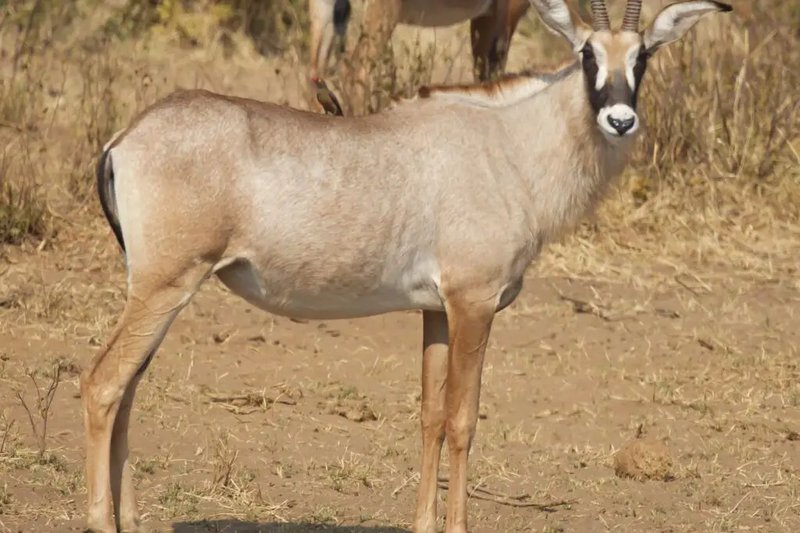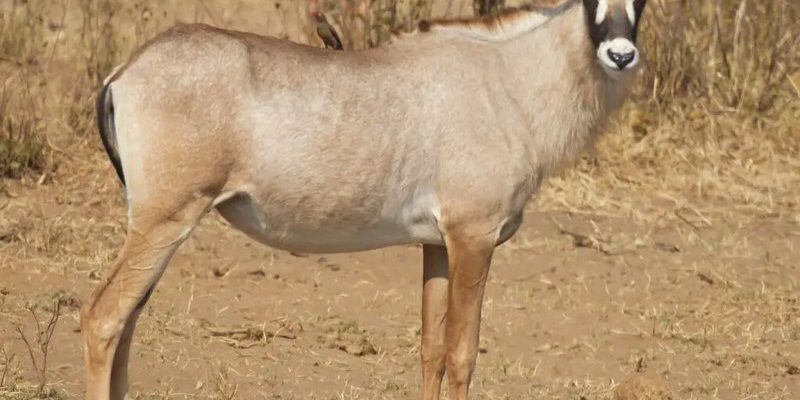
In this article, we’ll explore 10 animals similar to the roan antelope, diving into their unique traits and how to tell them apart. Think of it as your cheat sheet for spotting these majestic beasts in the wild or at your local zoo. By the end, you’ll not only impress your friends with your wildlife knowledge but also gain a deeper appreciation for these incredible animals.
The Roan Antelope: A Quick Overview
Let’s kick things off with a closer look at the roan antelope itself. Native to the savannas and woodlands of Africa, this antelope stands out with its rich chestnut color and striking black facial markings. They usually weigh between 400 to 600 pounds and can reach heights of up to 4.5 feet at the shoulder. The roan antelope is a social animal, often found in small herds, and is known for its impressive stamina and speed.
You might be wondering why it’s important to know about animals similar to the roan antelope. Well, recognizing these beautiful species enhances our understanding of biodiversity and encourages conservation efforts. Plus, identifying these animals can turn an ordinary safari into a thrilling adventure. So let’s dive into the world of wildlife and discover ten animals that are similar yet unique in their own right.
1. Sable Antelope
When you think of the roan antelope, the sable antelope often comes to mind. They share a similar body shape and coloring, with both featuring long, curved horns. However, sable antelope have a more pronounced dark coat, with striking white facial markings.
These animals are typically found in eastern and southern Africa, residing in savannas and grasslands. While roan antelopes are known for their speed, sable antelopes are famed for their strength and agility, often showing a more aggressive demeanor when threatened. If you’re observing these two side by side, you’ll notice the sable’s longer, more curved horns, which can give it a distinct profile.
2. Tsessebe
Next up is the tsessebe, another member of the antelope family that resembles the roan. These animals have a sleek body and long legs, similar to the roan. However, tsessebe are usually taller and have a more angular appearance. Their coloring is a bit darker, often showing shades of brown or reddish-brown.
Tsessebes are known for their incredible speed, capable of reaching up to 50 miles per hour. This makes them one of the faster antelope species. When trying to distinguish a tsessebe from a roan, look for its flatter face and longer limbs. If you see a group sprinting across the plains, you’ll likely spot the tsessebe’s quick movements, setting them apart from their slower counterparts.
3. Waterbuck
The waterbuck is another antelope you might encounter, and it shares some similarities with the roan. These animals are typically larger, with a robust body and distinctive spiral horns. They have a shaggy coat that’s usually a grayish-brown, which can sometimes create confusion.
Waterbucks thrive near water bodies, which is a huge factor in telling them apart. Unlike roan antelopes, they have a distinctive white ring around their rear and a more substantial build. If you’re observing them from a distance, the waterbuck’s more rounded body and the way it often grazes near water sources can help you identify it.
4. Impala
The impala might be smaller than the roan antelope, but it’s still worth mentioning. They tend to have a more slender build and are famed for their graceful leaps. Impalas come in a reddish-brown color, with white markings on their face and tails, making them visually unique.
Unlike roan antelopes, impalas are highly social and often form large herds. Their fluid movement and playfulness are noteworthy. When comparing the two, the impala’s smaller size and shorter horns can help in distinguishing them—but don’t be fooled, their agility is unmatched!
5. Greater Kudu
Moving on to the greater kudu, another striking antelope species. Known for their impressive spiral horns, males can reach up to 72 inches in length! They have a grayish-brown coat with white stripes, which is quite different from the roan’s solid color.
Kudus are more elusive than roan antelopes, often found in dense bush and woodlands. Their tall stature and large ears set them apart, and if you’re lucky enough to catch a glimpse, you’ll notice how they tend to blend into their surroundings, making them harder to spot.
6. Nyala
The nyala is another close relative that’s worth discussing. Males have a long, shaggy coat and striking white vertical stripes, while females are lighter and less shaggy. This stark contrast is a key distinction from the roan antelope.
Nyala are known for their shy behavior and prefer to stay hidden in thick bushes. If you encounter a nyala, pay attention to its unique shaped horns and the way its coat seems to shimmer in the sunlight, which creates a mesmerizing sight against its natural habitat.
7. Bontebok
If you’re in southern Africa, you might come across the bontebok. This antelope has a similar body structure to the roan but is much smaller and has a striking dark brown body with distinct white markings on its face and underbelly.
While both the bontebok and the roan can be found in open grasslands, bonteboks are more associated with protected areas. When spotting them, their unique coloration and smaller stature will give them away in comparison to the larger roan.
8. Bongo
The bongo is a beautifully patterned antelope that stands out with its reddish-brown coat and white stripes. Unlike the roan, bongos are forest dwellers and tend to be more elusive.
With their long, spiraled horns, bongos present a striking image. When comparing them to roans, look for the bongo’s more stocky build and the lush environments they prefer. Their shyer nature means they might be harder to spot, but they’re well worth the search.
9. Red Hartebeest
The red hartebeest is another similar animal that sports a more elongated face and is known for its strangely shaped horns. They have a reddish-brown coat, which can sometimes be confused with that of the roan.
What sets the red hartebeest apart is its unique body shape, which is more angular compared to the roan’s smoother curves. The way they graze and move in herds can also give insight into their differences. Pay attention to their posture; it’s one of the easiest ways to differentiate them.
10. Sitatunga
Finally, let’s talk about the sitatunga, an antelope that’s often found in swamps and marshy areas. They have long, splayed hooves that help them navigate muddy terrain, unlike the roan antelope, which prefers drier habitats.
Sitatungas have a shaggy coat that can vary from light to dark brown and are generally lighter than the roan. The most telling feature is their affinity for water. If you see an antelope emerging from a swamp, chances are it’s a sitatunga, easily distinguishable by its adaptations for that environment.
Exploring the world of antelope and their relatives can be quite fascinating. The roan antelope shares its beauty and grace with several other species that may look similar at first glance. By understanding their unique features and habitats, you can appreciate the diversity in the animal kingdom.
So, the next time you’re out in the wild or visiting a wildlife park, take a moment to observe these animals closely. Look for those subtle differences in color, size, and behavior. Each antelope carries its own story and significance in its ecosystem. Happy wildlife watching!

